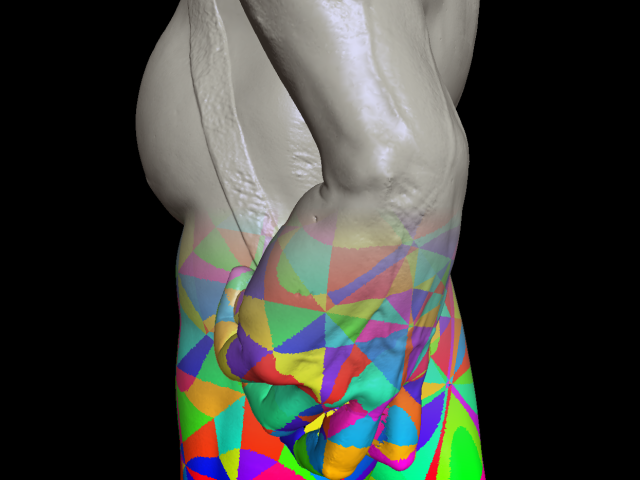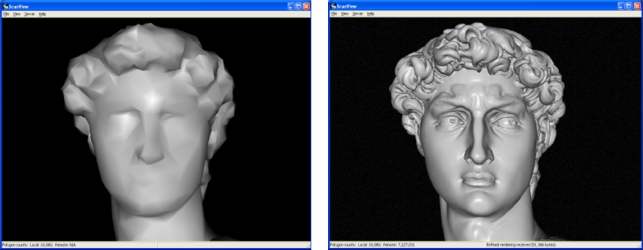The research activity carried on by the Visual Computing Lab in the field of 3D Modeling and Interactive Graphics for applications to Cultural Heritage has led to new, important results. Such results are described in the papers:
[A] Adaptive TetraPuzzles: Efficient Out-of-Core Construction and Visualization of Gigantic Multiresolution Polygonal Models
P. Cignoni, F. Ganovelli, F. Ponchio e R. Scopigno (ISTI-CNR, Pisa), E. Gobbetti e F. Marton (CRS4, Cagliari)
[B] Protected Interactive 3D Graphics Via Remote Rendering
M. Tarini, G. Croccia, P. Cignoni e R. Scopigno (ISTI-CNR, Pisa), D. Koller, M. Turitzin e M. Levoy (Stanford University, Berkeley)
[C] PolyCube-Maps
M. Tarini, K. Hormann, P. Cignoni, C. Montani (ISTI-CNR)
These results will be published on the ACM Journal "Computer Graphics" and presented at the SIGGRAPH 2004 International conference, the most reputable and selective conference in the field.
Modern 3D scanning technologies enable the creation of complex and detailed digital models, formed by hundreds of millions of triangles. Such models are difficult to handle in real time, expensive to realize, and they present a lot of problems in terms of detail and texture mapping.
Paper [A] presents a new multiresolution data structure which is able to interactively visualize the most complex digital models while maintaining an optimal control over the visual error and guaranteeing performances which are an order of magnitude more efficient of the existing ones.
The topic of paper [B] is the fruition of 3D digital models in internet while guaranteeing at the same time protection and security for the distributed information. In fact, it is important to maintain control over the use (or misuse) of the 3D scanned models, due to the high creation costs and the property right of the original artifacts.
We designed a new paradigm for the management of 3D graphics data in which the remote client only receives low resolution 3D models and it is based on remote rendering techniques for the production of high quality views. Effective countermeasures that make useless the illegal attempts to reconstruct 3D models from synthetic renderings have been implemented.
A recurring problem in processing 3D digital models consists in their parameterization, that is, a mapping between the model and a 2D rectangular region that minimizes the distortions, preserves as much as possible areas and angles, and at the same time introducing as few discontinuities as possible. In the applications for Cultural Heritage an efficient parameterization provides a base for texture mapping the 3D scanned models.
Paper [C] presents an innovative solution based on the replacement of the parameterization domain (typically a 2D texture rectangle) with a more flexible 3D structure (called PolyCube map). In this way the parameterization is now a function between two 3D 2-manyfold surfaces, it hasn't discuntinuities, and it presents very low distortions of areas and angles.
Immagini:



